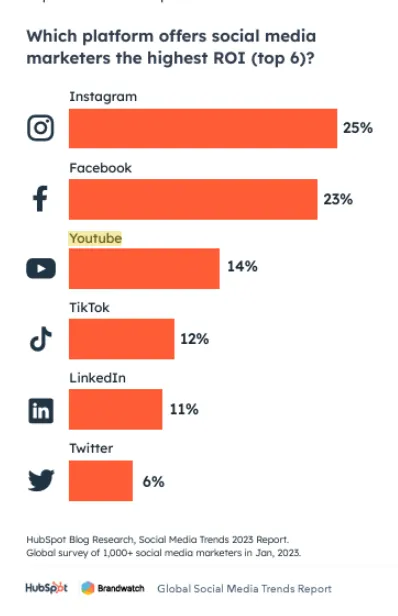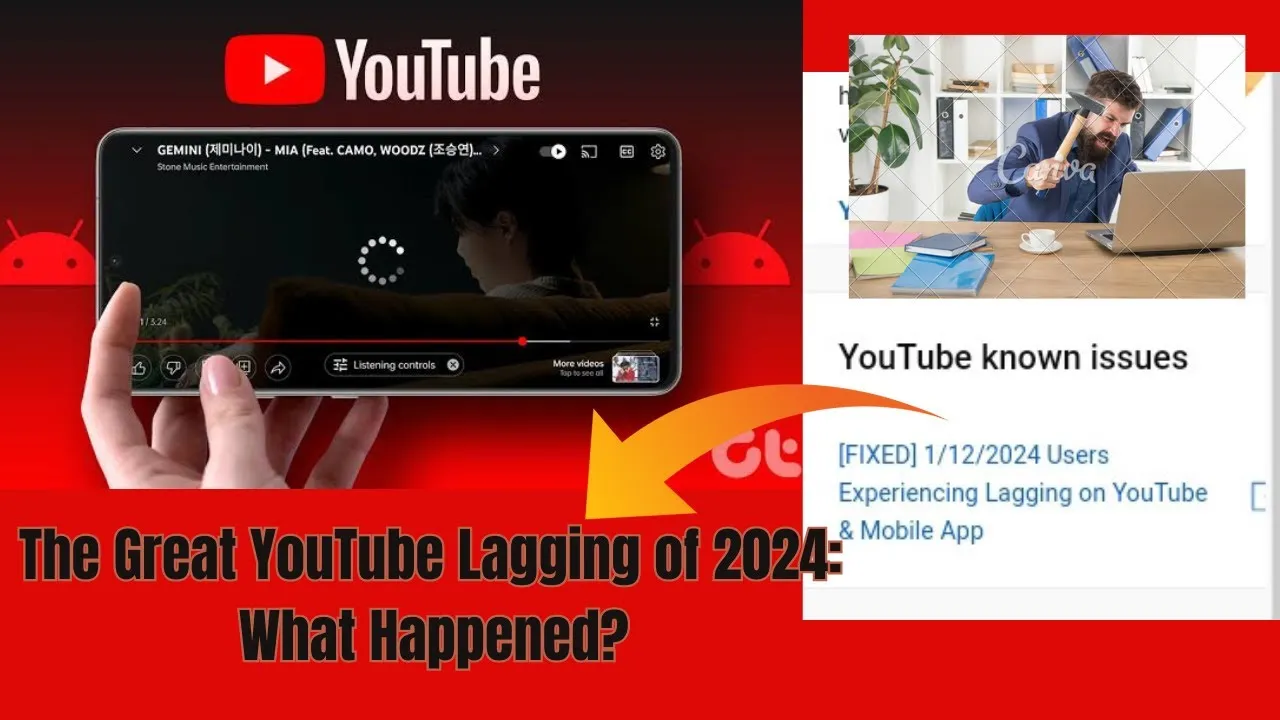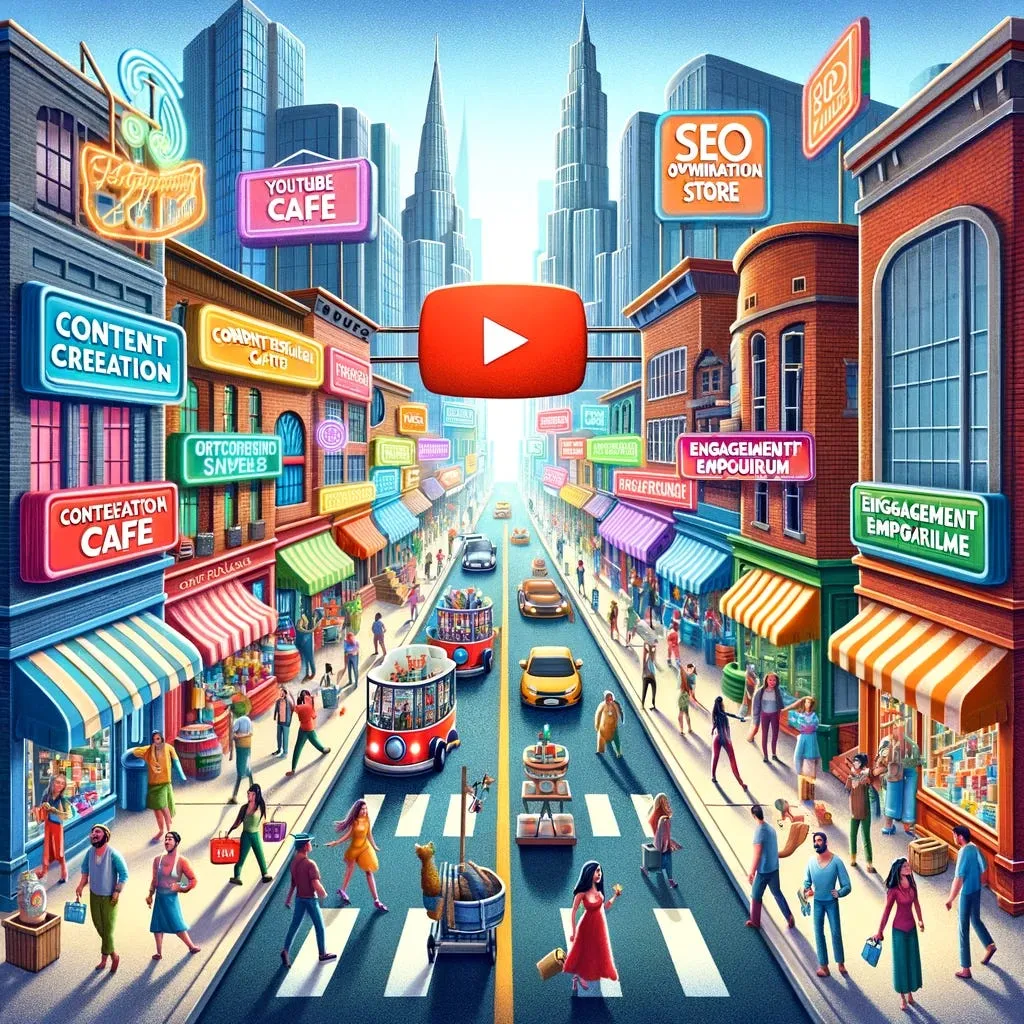As we venture into 2024, many users are experiencing frustration with YouTube's sluggish performance. With an ever-expanding library of content and increasing user demand, slow streaming and buffering have become common complaints. But why is this happening? In this blog post, we'll dive into the intricacies of YouTube's performance issues and uncover the factors that contribute to a less-than-optimal viewing experience. Whether you're a casual viewer or a content creator, understanding these challenges can help you navigate the platform more effectively.
Common Causes of Slow Streaming on YouTube

Slow streaming on YouTube can be attributed to a variety of factors. Here’s a breakdown of the most common culprits:
- Internet Connection Speed: A slow or unstable internet connection is often the leading cause of buffering. To stream videos smoothly, a minimum speed of 5 Mbps is recommended for standard definition, while 25 Mbps is ideal for 4K content. You can check your internet speed using tools like Speedtest.net.
- Network Congestion: During peak hours, networks may experience high traffic, causing slowdowns. This is especially noticeable in residential areas where many users are streaming simultaneously.
- Device Performance: Older devices may struggle to handle high-quality video streams. Ensure your device is updated and has sufficient processing power to run YouTube efficiently.
- Browser Issues: Sometimes, the browser you’re using can be the problem. Extensions, outdated versions, or accumulated cache can hinder performance. Try clearing your cache or switching to a different browser.
- YouTube Server Issues: Occasionally, the problem lies with YouTube itself. Server outages or maintenance can affect streaming quality. Keeping an eye on social media or platforms like DownDetector can provide updates on such issues.
Addressing these factors can significantly enhance your YouTube experience, allowing you to enjoy your favorite content without interruptions.
Also Read This: Exploring the Vast Collection of Getty Images
Impact of Internet Connectivity on YouTube Speed

When it comes to streaming videos on YouTube, your internet connection plays a crucial role. We often underestimate how much our network speed affects our viewing experience. If you're experiencing buffering or slow load times, it's worth exploring the different aspects of your connectivity.
Here are some key factors to consider:
- Bandwidth: This refers to the maximum amount of data your internet connection can handle at a time. Higher bandwidth can support multiple devices streaming simultaneously without compromising speed.
- Latency: Also known as ping, latency measures the delay before data starts transferring. A high latency can lead to significant lag in video playback.
- Network Congestion: During peak hours, many users may be online, which can slow down your internet speed. If you notice slower performance during evenings or weekends, this might be the reason.
- Wi-Fi vs. Wired Connection: While Wi-Fi offers convenience, a wired Ethernet connection typically provides faster and more stable speeds. If you're serious about streaming, consider making the switch.
- ISP Throttling: Some Internet Service Providers (ISPs) may intentionally slow down your connection during peak times or if they detect high-bandwidth usage. Checking your plan and reviewing ISP policies can provide insights.
In summary, a stable and fast internet connection is essential for a smooth YouTube experience. Assessing these connectivity factors can help you identify and resolve any issues affecting your streaming speed.
Also Read This: How to Record Audio from YouTube on a Mac
The Role of Device Performance in Streaming Quality

Your device’s performance can have a surprising impact on how well YouTube streams. Even with a fast internet connection, an underperforming device can lead to lag, buffering, and poor video quality. So what should you look out for?
Here are some important aspects of device performance that affect streaming:
- Processor Speed: A device with a faster processor can decode video streams more efficiently. If your device is older or has a slow CPU, it may struggle with high-definition content.
- RAM Capacity: Adequate RAM is necessary for multitasking. If your device is low on memory, it may not handle YouTube's demands alongside other applications, leading to a choppy viewing experience.
- Graphics Capability: Devices with dedicated graphics cards often provide better rendering of video content. If you’re using integrated graphics, you might encounter limitations, especially with 4K streams.
- Software Updates: Keeping your operating system and apps updated ensures that you benefit from the latest performance enhancements and bug fixes. An outdated app can lead to slow performance.
- Background Applications: Running multiple applications can hog resources. Closing unnecessary apps can free up memory and processing power, improving YouTube’s performance.
In conclusion, understanding how your device's specifications and performance influence your streaming can help you optimize your YouTube experience. Sometimes, a simple upgrade or a few tweaks can make all the difference.
Also Read This: How to Achieve Behance Featured Status
Server Load and Its Effects on YouTube's Functionality
Have you ever noticed that sometimes YouTube takes forever to load your favorite video? Well, you’re not alone. One of the biggest culprits behind this sluggishness is server load. When too many users try to access YouTube at the same time, the servers become overwhelmed.
Imagine a popular café that suddenly gets flooded with customers. The baristas (servers) can only make so many drinks at once. As a result, some customers might have to wait longer than usual. Similarly, during peak hours—like evenings or weekends—YouTube's servers can become congested, leading to slow loading times or even buffering.
Here’s a breakdown of how server load impacts YouTube:
- High Traffic Volume: If millions of users are streaming videos simultaneously, the server’s bandwidth gets stretched thin.
- Data Transmission Delays: Increased load can slow down the data transmission rate, causing delays in video playback.
- Increased Buffering: Higher loads may lead to more buffering, which can be frustrating when you just want to enjoy your video.
To manage this, YouTube employs various strategies, including distributing content across multiple servers worldwide. However, during peak times, even these measures can fall short, affecting your viewing experience. So next time you’re waiting for a video to load, remember, it might just be a busy day at YouTube’s café!
Also Read This: Enhance Your Website with High-Quality Graphics from VectorStock
How YouTube's Algorithm Influences Playback Speed
Did you know that YouTube's algorithm doesn’t just recommend videos based on your viewing habits? It also plays a significant role in how quickly those videos start playing. YouTube's algorithm is designed to optimize user experience, but it can sometimes lead to slower playback speeds, especially under certain conditions.
Here’s how it works:
- Adaptive Streaming: YouTube adjusts video quality based on your internet speed. If your connection is slow, it may lower the quality to prevent buffering, which can cause delays before playback begins.
- Pre-buffering: Before playing a video, YouTube may pre-buffer a portion of it to ensure smooth playback. However, if the server is under heavy load, this process can take longer, delaying the start of your video.
- Content Recommendations: The algorithm also takes time to analyze which video to recommend next, and if it’s busy processing that information, it may delay playback.
In essence, while the algorithm aims to enhance your viewing experience, external factors like server load and internet speed can influence playback speed. So, the next time you're waiting for a video to load, think about the behind-the-scenes work the algorithm is doing, even if it’s not always quick enough!
Also Read This: How to Share a YouTube Video to Your Instagram Story with Simple Tips
7. Potential Solutions to Improve YouTube Speed
Experiencing slow performance on YouTube can be frustrating, especially when you're eager to watch your favorite videos. Fortunately, there are several solutions you can try to enhance your viewing experience. Here’s a list of effective strategies:
- Check Your Internet Connection: A slow connection is often the culprit. Use a speed test tool to check your bandwidth. Aim for at least 5 Mbps for standard definition and 25 Mbps for HD content.
- Clear Cache and Cookies: Over time, your browser can accumulate excessive data that slows performance. Regularly clearing your cache and cookies can help.
- Update Your Browser: Using an outdated browser can affect video playback. Always keep your browser updated to the latest version for optimal performance.
- Lower Video Quality: If your connection is shaky, consider lowering the video quality. YouTube allows you to adjust settings from 1080p to 480p or even lower.
- Disable Browser Extensions: Some extensions may interfere with video playback. Try disabling them temporarily to see if performance improves.
- Use YouTube App: If you’re watching on a mobile device, consider using the YouTube app instead of the browser. Apps often provide a more stable experience.
- Router Reboot: Occasionally, simply rebooting your router can resolve connectivity issues.
Trying these solutions can significantly enhance your YouTube experience, making it more enjoyable and less frustrating!
8. Conclusion: Navigating YouTube's Performance Challenges
In 2024, YouTube continues to be a dominant platform for video content, but its performance is not without challenges. Users often experience slow loading times, buffering, and video lag, which can detract from the enjoyment of content. However, understanding these challenges allows us to develop strategies to mitigate them.
As we’ve discussed, numerous factors contribute to slow performance including internet speed, server issues, and even device capabilities. It's essential to identify whether the problem lies with your connection or the platform itself. In many cases, a few simple adjustments can lead to a smoother viewing experience.
Moving forward, it’s crucial for both users and YouTube to work towards solutions. Users should adopt best practices for their internet use, while YouTube must continue to optimize their platform for speed and efficiency.
Ultimately, navigating YouTube’s performance challenges requires a proactive approach. By staying informed and applying the tips and solutions discussed, viewers can enjoy seamless streaming and fully immerse themselves in the vast world of video content.